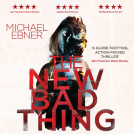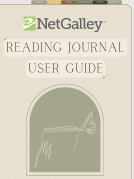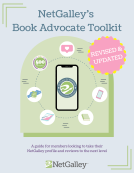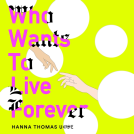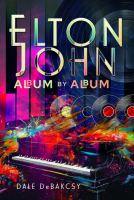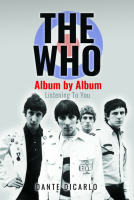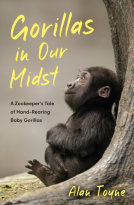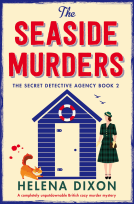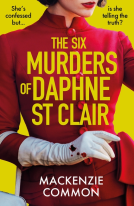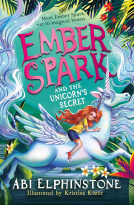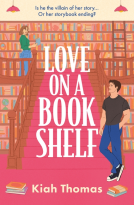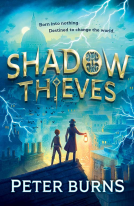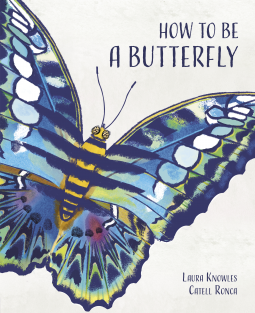
How to Be a Butterfly
by Laura Knowles
This title was previously available on NetGalley and is now archived.
Send NetGalley books directly to your Kindle or Kindle app
1
To read on a Kindle or Kindle app, please add kindle@netgalley.com as an approved email address to receive files in your Amazon account. Click here for step-by-step instructions.
2
Also find your Kindle email address within your Amazon account, and enter it here.
Pub Date 16 Apr 2019 | Archive Date 30 May 2019
Quarto Publishing Group - words & pictures | words & pictures
Talking about this book? Use #HowToBeAbutterfly #NetGalley. More hashtag tips!
Description
Not only beautiful to behold, butterflies provide an opportunity to introduce a variety of environmental topics. Serving as key indicators of biodiversity and healthy ecosystems, they face threats of extinction due to climate change and habitat destruction—all vital subjects for children today.
With stunning illustrations displaying a colorful array of different butterfly species, each labeled with its scientific name, and fascinating details about their anatomy and life cycle, there is plenty for young nature lovers to spot and explore time and again.
Available Editions
| EDITION | Other Format |
| ISBN | 9781786038845 |
| PRICE | US$17.95 (USD) |
| PAGES | 32 |
Featured Reviews
 Pat M, Reviewer
Pat M, Reviewer
5★
“To be a butterfly, you must be a master of disguise.”
Bring on the butterflies! This is one of the prettiest books around, and you know what? I think it might be just the thing to appeal to those kids who are so besotted with dinosaurs. Not that there’s anything wrong with that, but wouldn’t it be great to channel all that enthusiasm for showing off fancy names into learning about some necessary little creatures who aren’t extinct . . . yet?
A world without butterflies and other insects would mean the end of life as we know it.
This has the most gorgeous illustrations that would make wonderful pieces of art in their own right. Each butterfly is carefully and artistically labelled with its proper name (I assume!), so the kids can memorise and astound us to their hearts’ content.
They learn the names of body parts, how they work, how butterflies suck nectar, disguise themselves, lay eggs, hatch into larvae, turn into members of The Very Hungry Caterpillar family (sorry, I couldn’t resist a nod to everyone’s favourite first book!), form a chrysalis, and emerge as butterflies.
The colours are irresistible for both the adults and caterpillars. There is a nod to moths, as well. Butterflies have long, smooth antennae with little clubs on the end for smelling and for balance. Moths have fuzzy antennae. Maybe you know that, but I learned something today.
I hope this stirs up a lot of interest in today’s kids. They have plenty of tools to research this in detail as they get older. I mean, look at me. I looked up the difference between a chrysalis and a cocoon. You can too, if you’re not sure. :)
Many thanks to Quarto Publishing and #NetGalley for a preview of #HowToBeAButterfly, to be published 16 April 2019
Here are just a few of the colourful pages to tempt you into being a butterfly! There are many more pages, of course. Sorry my screenshots aren't as clear as the real thing and probably aren't visible on the Goodreads apps. They aren't visible on NetGalley either, but these are the captions:
1. These are your body parts.
2. You will need bright, bold colors.
3. Or you can have soft colours, too.
4. Here's where you lay your eggs. (Remember, YOU are learning to be the butterfly.)
5. You will soon join the ranks of the very hungry caterpillars.
6. The chrysalis will protect your transformation.
7. You must go to bed at night, because the moths come out! (Note their fuzzy antennae.)
8. There are twenty thousand ways to be a butterfly!
9. So off you go in your new body!
10. The life cycle of the butterfly
This is a beautiful book and leads itself to be read and devoured page by page. The stunning illustrations show detail and research into the thousands of butterfly species, and it is so thoughtfully arranged.
I enjoyed the text, as it was easy to read and understand and almost spoken as though the reader wants to become a butterfly. Perfect for younger readers wanting to learn more about these beautiful creatures.
We all know the story of the butterfly life cycle and it is one that schools consistently teach, year after year. This would make an excellent class text to study, and to learn the names and details of some of the butterflies. There are a huge number that I hadn't heard of and it was lovely to see what they would look like.
Each butterfly also has its own unique caterpillar and pupa stage and it is nature's wonder how it happens so perfectly.
A gorgeous book and I will be recommending to all primary schools I work with to add colour, style and new ways of learning about butterflies!
 Cathy G, Reviewer
Cathy G, Reviewer
How to Be a Butterfly
words by Laura Knowles
pictures by Catell Ronca
This lovely book is one I can see parents or older siblings reading to younger children. The illustrations are beautiful detailing a wide number of butterflies that include their scientific names as well. The butterfly parts are shown as is the life cycle of the butterfly. This is a book I can see buying for my granddaughter or as a gift to give to any child.
Thank you to NetGalley and Quarto Publishing Group for the ARC – This is my honest review.
4.5 Stars
How to Be a Butterfly is an informative yet completely engaging book about the butterfly species. The illustrations are gorgeously done and give so many important details into the species as well as detailing all the unique characteristics.
This book gives you information about the butterfly lifecycles and also shares about so many butterflies species I had never even heard of previously. Our grade school aged children devoured this book and it is definitely one we will be adding to our home library.
A big thank you to Quarto Publishing and NetGalley for a copy of this ebook in exchange for an honest review.
 Laura T, Reviewer
Laura T, Reviewer
It turns out there are some characteristics that are quite necessary to be a butterfly, as the cute and conversational How to Be a Butterfly details -- but within those key characteristics, butterflies can be all kinds of things -- big, small, plain, flashy, with wings that have smooth or wiggly edges, etc.
This book celebrates the diversity of butterflies, accompanied by many lovely illustrations of their colors and their actions, from flying and drinking nectar, to their unique life cycle.
(Thanks to NetGalley for the review copy.)
 Rogene C, Educator
Rogene C, Educator
A beautiful nonfiction title that deserves to be in many young classrooms. This is a great resource for teachers and parents about this topic.
This is an odd little book. It is supposed to introduce children to butterflies, and it does with some gorgeous pictures, but the writing is a little bit too much in the vernacular, very conversationally, which makes the voice a little off.
If you are trying instruct, don't say, oh, all butterflies have to have dazzling colors and then say, oh, no they don't.
The pictures, though, the pictures sort of make up for the sloppy writing. Just look at these pictures.
<img src="https://g2comm.com/wp-content/uploads/2019/04/Screen-Shot-2019-04-11-at-10.52.01-PM.png" alt="How to be a butterfly" class="alignnone size-full wp-image-5077" />
I get that the author is trying to be playful, and I commend her for doing so, but when you are trying to teach, then don't try to mess with the truth.
Thanks to Netgalley for making this book available for an honest review.
Beautifully illustrated book packed full of scientific facts about butterflies. Children will learn about the life cycle of a butterfly, the difference between a moth and a butterfly, butterfly anatomy and survival skills and the names of dozens of different types of butterflies. Great for kids of all ages!
Thank you to #NetGalley and The Quarto Group for letting me read this beautiful book in exchange for my honest review. All opinions are my own. #HowToBeAButterfly
 Kathleen G, Librarian
Kathleen G, Librarian
This is the best book I've seen about butterflies for young readers! The illustrations are vibrant and engaging and though there is little text, it is informative and to the point. The text works well with the illustrations and will inform young readers while not losing their attention. I highly recommend for pre-school up through grade 4.
 Pamela G, Librarian
Pamela G, Librarian
I received an electronic ARC from Quarto Publishing Group through NetGalley.
Butterflies soar across each page. Knowles provides information on what makes a butterfly a butterfly. And, just like any other species, the characteristics vary as widely as the subspecies themselves.
Younger readers will delight in seeing the many types of butterflies and learning about how they are alike and yet unique.
Facts are shared in narrative text.
 Montzalee W, Reviewer
Montzalee W, Reviewer
How to Be a Butterfly by Laura Knowles is a wonderfully illustrated book I requested from NetGalley and the review is voluntary. This book teaches the reader how to BE a Butterfly and the life cycle of butterflies. I give it a 3 star for writing the text since it seemed to tell the reader one thing then the next page tell the reader another thing...bit odd if you're young and trying to figure things out.
The illustrations are definitely a 5 star performance! So get the book and just look at the pictures! Nice book!
How to Be a Butterfly by Laura Knowles was just a beautifully written book. Everyone loves a butterfly and this books tells the story of how the it takes to be a butterfly – their body parts, behaviour, how they work, how butterflies suck nectar, disguise themselves, lay eggs, hatch into larvae, their life cycle, I could not imagine the world without these beautiful insects and give me joy when I see them in my garden etc.
This book is a must of you are teaching your children about these beautiful insects especially if you make this is a nature game of looking out for them when you are out with you children etc.
Thank you to #NetGalley and The Quarto Group for letting me read this beautiful book in exchange for my honest review. All opinions are my own.
 Richard L, Reviewer
Richard L, Reviewer
What a super book for children of all ages. Packed full of illustrations of some of the most spectacular and bright butterflies. Ranging in colour from bold to delicate hues and the ability to mask themselves against a tree or flower or appear more than they are.
Every child at school learns the life cycle of a butterfly. These delightful creatures flutter by in jerky moves brightening any day outside by their presence.
It is an injustice that for so long collectors had cases and cabinets filled with these beautiful insects, pinned and dead. While they were engineered from caterpillars to one day fly soundlessly into the air.
No child would not cease to draw immense pleasure from this short book. The younger ones have a simple text the older ones can spot and identify those illustrated and named in Latin. A great educational tool and reference book too.
Even as an older reader I learned a great deal and the book is so much fun.
If your antennae look fuzzy, then you are not a butterfly: you’re a moth”.
A delight-coming to a child by your side shortly.
 Rebekah L, Reviewer
Rebekah L, Reviewer
Butterflies are as unique as you and me, and come in every different color and size. How to Be a Butterfly teaches young children all about these wonderful creatures and how each part of their bodies work together to serve a purpose in the butterfly's daily life.
 John L, Reviewer
John L, Reviewer
An attractively-presented volume regarding butterflies – and what helps us identify them, as opposed to moths – with a nice simple, uncluttered look. In detailing the many differences, in subtlety, in wing shape, in chrysalis look and so on, you get some semblance of the 20,000 types out there, and every instance has the scientific binomial as well, in case your teacher's watching. I didn't think it really needed the second person narrative, however, pointing to us as a potential butterfly. I'd rate this more for the visuals as a result.
I truly loved every page in this wonderful book. There is so much variety in the pages, some packed full of butterflies, others highlighting a particular feature of a butterfly.
The way the text and illustrations blend together creates a subtle but powerful message to celebrate diversity and not be quick to define what a butterfly must be or not be. The spread before my favourite says:
“To be a butterfly, you have to be BIG!
…or you could be small, I suppose.”
[Then there is a spread showing a bold and colourful range of butterflies.]
I adore butterflies so I was desperate to read this book. However, it surpassed my expectations, offering so much more than just an account of the different species and anatomy. It celebrates and showcases the full spectrum of butterflies and makes the “facts” feel fun. I loved it.
I am very grateful to Quarto for providing me with an advanced digital copy via Net Galley of How to be a Butterfly in exchange for an honest review.
** This review will be included in Spotlight Feature including an interview with the illustrator on Saturday 11 May **
Did you there are 20,000 ways to be a butterfly? This is a striking and visually appealing book. Readers and lookers will be thrilled with the collage of colors and shapes related to butterflies. Did you know that if your antennae look fuzzy, you are not a butterfly, you are a moth. Also if you want to be a butterfly, your proboscis must be long and curly. The book is full if other fun facts throughout.
I foresee children desiring this lovely book that is chocked full with vivid illustrations of a wide variety of butterflies and oh yes a few moths. I also predict this to be a teacher favorite when teaching bugs, insects and life cycles.
 Tara H, Librarian
Tara H, Librarian
I received this arc from Netgalley for an honest review. An amazing book about what it takes to be a butterfly. I loved this book from the beginning. It’s equal parts fun and informative and interesting. Can’t wait to get my hands on a physical copy
Mom: I was immediately drawn in by the cover of the book. #judgeabookbythecovereveryday
The artwork in this book is amazing. I will be purchasing a copy of this book just for the illustrations.
Beyond the pretty pictures, this book does a wonderful job showing the diversity of butterflies. “To be a butterfly, you need to be BIG!...our you could be small I suppose.” The different sizes, colors, shapes, and talents (camouflage, etc.) throughout the book can be used to accentuate how each of us are different and amazing, as well.
MC: I liked seeing all the parts of a butterfly. I couldn’t make my own tongue work like a proboscis, though.
Mom: While offering a fun overview and story of what it takes to be a butterfly, the inclusion of the scientific/Latin names of each butterfly in the book, the variations in appearance, and the life cycle of a butterfly makes this a perfect book to be included in any school or home library.
MyChild: Our science museum has a lot of the butterflies I saw in this book!
Stars: 4
Would We Recommend? Yes
 Patty B, Educator
Patty B, Educator
Lovely blend of art and information, the kind of book you want to leave open somewhere in sight instead of on a shelf.
This beautiful book has plenty of details (and butterfly names) to pour over in the illustrations, while keeping the text straightforward and easy to absorb. Presents a wide variety of contrasts between different kinds of butterflies, challenging young readers to think beyond what they already know about butterflies and explore new possibilities while also explaining the basic life cycle that is common to all butterflies.
 Rani I, Reviewer
Rani I, Reviewer
Excellent introduction to butterfly, the diversity, and distinguish them from moths. Sparse text with detailed, colorful illustrations make this book a delight for young readers to discover. Excellent addition to classroom, libraries, and STEM reading.
 Educator 539848
Educator 539848
I first want to say that this is not going to be a complete review. Having tried several apps to read this book, I have been unable to read any of the text. I wanted to leave my review however, because I can see all of the illustrations, which are beautiful. Butterflies are a big part of one of our class topics (Austin's butterfly, lifecycles etc) and so I know that this book will be an excellent addition to the class library.
The illustrations of this book were beautiful though a bit hard to fully see in the electronic format of the ARC I received. My 2 year old was very interested in the different sizes and colors of butterflies and wanted to “flip” through this book for awhile. The text of the book itself wasn’t especially compelling IMO, but also we couldn’t see all of it so I didn’t let that impact my review.
‘How to Be a Butterfly’ is one of the most visually detailed picture books about butterflies I’ve come across - outside of an academic text.
Each page is a simple, child-friendly instruction on how to be a butterfly (“You need to be big...or small.” “You need dazzling, bold colors...or subtle, delicate colors.”)
However, what shines brightest are the ridiculously detailed butterflies soaring across each page. Not only are the colors and wing shapes meticulous, but we also learn the name of each individual insect: Ornithoptera alexandrae, Morpho Menelaus, Cymothoe sangaris, Junonia Octavia, Danaus plexippus.
While I thoroughly enjoyed the visuals executed beautifully by Catell Ronca, I felt the text was a bit lacking. The simple language was perfect for young readers to understand – especially when explaining changing from a caterpillar to butterfly – in what can be an intricate process. What I found lacking was that it felt just a tiny bit too simple. I can absolutely see where Laura Knowles was coming from when writing her text, I guess I was hoping for...more! More information? More details? Just...more.
Overall, this is a beautiful & educational book, especially for readers on the younger end of the spectrum – those not quite in school yet.
Solid Four Star Read
A huge Thank You to NetGalley & Quarto Books for the digital copy to review.
